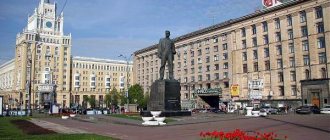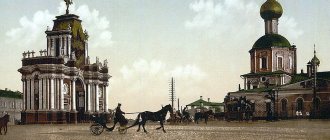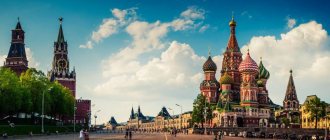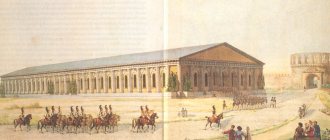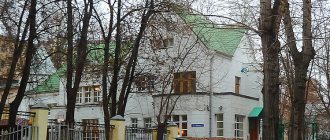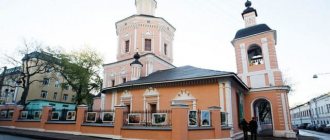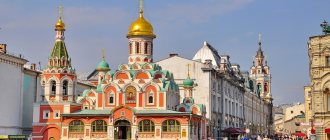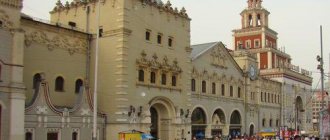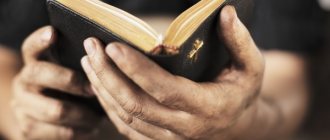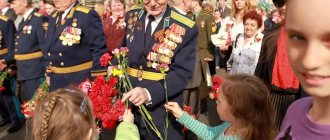The name “Lubyanka” is associated primarily with the FSB building on Lubyanka Square. For a Russian, a building represents a historical force from which it is best to stay away, while foreigners can afford to be curious; in the old days it was almost a sport to pester foreign tourist guides with sensitive questions whenever the building came into view of the tourists above hill starting from Okhotny Ryad. State security agencies are still located here and are currently called the FSB.
The fact that the building is named after its location on Lubyanka Square is well known, but few people know that the main directorate of the secret police during the time of Catherine the Great was located in this same place. The memory of it completely disappeared in the 19th century, when the square was surrounded by stables and closets for cab drivers to rest. This continued until the 1890s, and then insurance companies developed the surrounding area with homes and office buildings. Confiscated after the revolution, they formed the basis of the city's reconstruction project in the 1930s, which included the destruction of the Vladimir Gate of Kitay-Gorod.
- 4.1 Along the ring to Apraksin’s house
In 1957, the traditional Soviet-era decision was made to build the largest children's store in Moscow on the square directly opposite the KGB building - a tribute to the founder of the Soviet Cheka, who also headed the commission to combat child homelessness. Situated on the site of a medieval armory where the giant Tsar Cannon for the Kremlin was cast, Detsky Mir now sells everything from Barbie dolls and Legos to lingerie; There is an internet cafe on the fourth floor.
FSB building (Lubyanka)
Mayakovsky Museum
To the left of the Lubyanka building, below the nameless building in which the security service computer center is located, a granite head looking intently from the gate onto Myasnitskaya Street marks the V.V. Museum. Mayakovsky. Vladimir Mayakovsky (1893-1930) was an enthusiastic supporter of the Bolsheviks from a young age, when at the Moscow School of Painting and Sculpture he joined the Futurists after meeting the Burliuk brothers. Together they published a manifesto called “A Slap in the Face of Public Taste” and took part in a propaganda tour, where Mayakovsky wore earrings and a vest with a bunch of radishes in his buttonhole.
In 1917, he threw himself into the October Revolution, founding the Left Front of Art with Alexander Rodchenko and Osip Brik, and created more than 600 giant posters with energetic poetic titles for the Russian Telegraph Agency. Mayakovsky's suicide at the age of 37 was explained in different ways: it was attributed to despair of the poet's love for Osip's wife, Lila, disappointment with Soviet reality and its censors, and unkind reviews of his last exhibition. Thousands of people gathered to pay his respects near his open casket at the Writers' Union, and Stalin later declared that “Mayakovsky was and remains the best and most talented poet of our Soviet era. Indifference to his memory and his works is a crime.”
Mayakovsky Museum
Opened in 1990 and run by the poet’s granddaughter, the Mayakovsky Museum is very different from other memorial museums, set up in the houses where a particular writer or artist lived, furnished with furniture in the spirit of the time and museum display cases. Inspecting the exhibition of this museum is more like walking inside Mayakovsky’s head during inspiration. Upholstered chairs and constructivist swirls complement stands displaying his poems and propaganda posters. Although nothing remains of the poet's original apartment, it was here that Mayakovsky lived starting in 1919, and here he committed suicide by shooting himself and leaving an unfinished poem next to him.
History of the name
The name of the 19th century was given after the area Lubyanka, which, in turn, was named after Lubyanitsa, a district of Veliky Novgorod. The name Lubyanka was first mentioned in the chronicle in 1480, when Ivan III ordered the Novgorodians, evicted to Moscow after the fall of the republic, to settle in this place. It was with the participation of the Novgorodians that the Church of St. Sophia was built, in the likeness of the St. Sophia Cathedral in Novgorod, and it was they who named this area Lubyanka. At the beginning of the 19th century, the square was called Nikolskaya - after the Nikolsky (Prolomny) Gate of Kitay-Gorod located here[1].
In 1926 it was renamed Dzerzhinsky Square
, in honor of Felix Dzerzhinsky, the founder of the Cheka, the Soviet state security service, who died in the summer of the same year. At the same time, Bolshaya Lubyanka Street was renamed Dzerzhinsky Street. In 1990, the square was returned to its previous name - Lubyanskaya Square[1].
To Chistye Prudy
The area of the Boulevard Ring, known as Chistye Prudy, is notable for several architectural wonders, mostly located within a 5-minute walk from the Chistye Prudy or Turgenevskaya metro stations. If you want to take a walk, go along Myasnitskaya Street, where at number 19, there is the Perlov Tea House, the facade of which is decorated with a bronze dragon and a decorative pagoda roof, and inside, polished columns and Chinese vases attract attention. There is a legend that the store was decorated in this way by the wealthy tea merchant Perlov, who wanted to impress the young Chinese Emperor during his visit to Russia in 1893.
Perlov's tea house
To Perlov’s great chagrin, the emperor, instead of his establishment, wished to visit the store of a tea merchant competing with him. Inside the store there is a wonderful aroma of tea and coffee. The pale peach and white building next door played an important role in Russian art after the Moscow School of Painting, Sculpture and Architecture was opened here in 1844. By 1872, with the first major exhibition of the Partnership of the Wanderers (TPHV), the Moscow School began to eclipse the Academy of Arts in St. Petersburg; four decades later, it has come to the fore.
Among the teachers was Leonid Pasternak, whose son Boris - the future author of the novel Doctor Zhivago - spent his childhood in the neighboring outbuilding. In 1920, the school was transformed into the Higher Artistic and Technical Workshops, or Vkhutemas, the short-lived Soviet equivalent of Weimar's Bauhaus, whose radical futurism alarmed Lenin. Besides the Tea House, Moscow's best local attractions are located near or directly on Chistoprudny Boulevard, around the corner from the Main Post Office building.
Lukoil head office
The boulevard and the area around it are named after the reservoir at the far end of the boulevard; until 1703, slaughterhouse waste was dumped there, then it was cleaned out by order of Prince Menshikov and henceforth became known as Chistye Prudy. Nowadays, a building with tinted glass rises above the boulevard - the main office of Lukoil, created during the privatization campaign in the 1990s. At the beginning of the boulevard stands a monument to Alexander Griboyedov, an army officer, playwright and diplomat who was killed in Tehran in 1829. The pedestal of the monument is decorated with bas-reliefs of characters from his famous play “Woe from Wit”.
Story
In 1835, a fountain by Ivan Vitali was built in the center of the square.
The fountain served as a water intake basin, where drinking water was supplied from the Mytishchi water supply system. The square at the beginning of the 20th century
| View of Lubyanka Square | The area at the turn of the 19th–20th centuries | The building of the Rossiya Insurance Company on Lubyanka Square |
Soviet period
Dzerzhinsky Square in May 1931 In
the spring of 1918, the All-Russian Extraordinary Commission for Combating Counter-Revolution and Sabotage (VChK) occupied house 11 on Bolshaya Lubyanka Street. The memory of this event is preserved by a memorial plaque on the house, which states that from April 1918 to December 1920, F. E. Dzerzhinsky worked there as chairman of the Cheka.
In 1927, Lubyanka Square was renamed Dzerzhinsky Square.
In 1934, the Vitali Fountain was dismantled and moved to the courtyard of the Alexandria Palace (where the Presidium of the Russian Academy of Sciences is now located) in Neskuchny Garden. Currently not working.
In 1957, above the flowerbed in the center of the square there was a flying carpet with figures of children attached by cables[2].
Dzerzhinsky Square in 1966
In 1958, a monument to Dzerzhinsky was erected in the center of the square, on the site of the former fountain. It was created by sculptor E. V. Vuchetich.
In 1990, the square was returned to its historical name [ clarify
].
Monument to Dzerzhinsky on the square before dismantling on August 22, 1991.
On October 30, 1990, on the Day of Remembrance of Victims of Political Repression, the Moscow Memorial Foundation erected a monument to the victims of the Gulag on the square, a large stone brought from Solovki.
On August 22, 1991, in the wake of the rise of democratic sentiments of the masses after the defeat of the August putsch, the statue of Dzerzhinsky was dismantled and moved to the Park of Arts near the building of the Central House of Artists on Krymsky Val, where it remains to this day, adjacent to other monuments of the Soviet era.
Menshikov Tower
At the beginning of the 18th century, this part of Moscow belonged to Prince Menshikov (1673-1729), who rose from a humble pie merchant to wealth and power thanks to his proximity to Peter the Great, extraordinary abilities and a deft mixture of “servility, bad manners and insolence.” Menshikov understood Peter’s dissatisfaction with the conservatism of Muscovites and the Orthodox Church and surpassed the Tsar himself in ostentatious gestures. For example, he commissioned Ivan Zarudny to build (1705-1707) an outstanding building that would combine Western secular forms and Orthodox architecture - the bright pink Church of the Archangel Gabriel.
Menshikov Tower
Popularly known as the Menshikov Tower, it boasted a bell tower with a wooden spire, on which there were fifty bells; a gilded statue of an archangel was installed on its top; the church was 3 meters higher than the bell tower of Ivan the Great in the Kremlin, until that time considered the tallest building in all of Russia. Menshikov's pride was punished in 1723, when the bell tower spire caught fire from lightning that struck it. Since Menshikov then lived in Oranienbaum, and soon after the death of Peter was forced to fight for survival, the restoration of the tower was not undertaken until 1766-1780, when the freemason Izmailov designed a bell tower with only two of the three originally existing octagonal rows and a gilded crown instead of a spire.
However, many features of Zarudny's design have been preserved: for example, the seraphim with the Bible that adorn the façade, and the massive pillars located on the left side of the building. The interior appears more Catholic than Orthodox, with frescoes filled with garlands and cherubs - Izmailov's Masonic symbols were removed after the Freemasons were excommunicated in 1863. The tower is visible from the street from behind the lower neoclassical Church of Theodore Stratelates. Turning right after both churches, you will find yourself in Krivokolenny Lane, so named because it has two sharp bends. Despite its name, it will easily take you to the area around Maroseyka. Along the way you can see several interesting Art Nouveau buildings.
Apraksinsky Palace
Along the ring to Apraksin's house
In the center of Chistoprudny Boulevard stands the Sovremennik Theater, occupying the building of a former cinema with an elegant round portico between bas-reliefs of Greek deities. Further, in house number 23 - a pompous, azure-colored residential building - director Sergei Eisenstein lived from 1920 to 1934. On the even side of the boulevard, pay attention to the house with figures, No. 14, built at the beginning of the last century, the facade of which is decorated with a bizarre interweaving of supernatural creatures. While in this area, it is worth taking a short trip beyond the Boulevard Ring to see the former house (palace) of Apraksin, located nearby, not far from the corner of Pokrovka Street.
Built in the 1760s, it faces the Pokrovsky Gate and the road leading to the royal chambers in the old quarter, previously inhabited by foreigners. The house was the last resort of decorative Baroque in Moscow: a chaotic array of curved windows and crenellated niches, groups of angels and Corinthian pilasters copied from the Winter Palace in St. Petersburg. The archway into its courtyard is hung with boards with the names of the technical journals that were located inside when the Industrial Academy was located here. Her students included Stalin's wife Nadezhda Alliluyeva and Nikita Khrushchev, who was the party secretary of the academy.
Ensemble of the square
State security building
This is the former building of the Rossiya Insurance Company, built in 1897-1898 according to the design of Academician A.V. Ivanov, and later reconstructed according to the design of A.V. Shchusev. The building was the headquarters of the USSR State Security Committee, and later became the headquarters of the Russian security service. The word “Lubyanka” has become allegorically associated with state security agencies (just as “Petrovka” is associated with the criminal investigation department).
New building of the FSB of the Russian Federation
In 1979-1982, on the left corner of Bolshaya Lubyanka (then Dzerzhinsky Street) and Kuznetsky Most, a group of architects led by B.V. Paluy and G.V. Makarevich built a new monumental building of the KGB of the USSR, where the leadership of the department moved. The building was built on the site of the demolished houses of the F. Schwabe company (for more details, see the article Vorovsky Square).
In 1985-1987, on the right corner of Myasnitskaya Street (then Kirova Street), according to the design of the same architects, the building of the USSR KGB Computer Center was built.
Computer center of the KGB of the USSR
Former Computer Center of the KGB of the USSR
The Computer Center building was built in 1987 according to the design of architects B. V. Paluy and G. V. Makarevich. The volume of the building includes the façade of a previously existing house[3]. Nowadays it is the FSB Information Security Center.
Central department store "Children's World"
The Detsky Mir department store is the latest creation of the outstanding architect Alexei Dushkin. Built between 1953 and 1957, the building had a famous atrium. However, in 2008 the building was closed for reconstruction. Like many other projects for the reconstruction of historical buildings (Moscow Hotel, Bolshoi Theater, etc.), the reconstruction of the Children's World has been repeatedly criticized in the media. At the end of 2011, Pavel Andreev was appointed chief architect. The latter stated that all work on the children's world is exclusively restoration in nature. The work was expected to be completed in 2013. The renovated department store opened in the spring of 2015 under the name “Central Children's Store on Lubyanka”. This is the largest children's shopping center in Europe. Also, in the main atrium, the largest clockwork mechanism in the world was erected: the “Rocket Monumental”. Previously, Lubyansky Passage stood on this site (1883, architect A.G. Veidenbaum).
Trading house "Biblio-Globus"
The trading house "Biblio-Globus" (until 1992 - "Book World"), one of the oldest and largest bookstores in Moscow, has existed since 1957 (Myasnitskaya 6/3, former apartment building of Stakheev).
Museum of Science and Industry
- No. 3/4 - Polytechnic Museum (1903-1907 - 3rd stage, architects G. I. Makaev, V. I. Eramishantsev, I. S. Tsedrovsky[4])
Solovetsky stone and square
The monument to the victims of Soviet repression “Solovetsky Stone” was erected in 1990 in the park near the Polytechnic Museum opposite the building of the former NKVD (later KGB) on Lubyanka according to the order of the Moscow Government. The location for the installation of the monument was chosen because it was at Lubyanka that documents were signed for the mass arrests of people accused of treason and anti-communism.
| View of Solovetsky Square from the observation deck of the Central Children's Store on Lubyanka (on the left is the main computer center of the FSB of Russia) | The Solovetsky Stone is a monument to the victims of political repression in the USSR, installed on Lubyanka Square. |
House of the Moscow Merchant Society
House of the Moscow Merchant Society (1909-1911, architect F. O. Shekhtel[5])
Hotel complex "Nikolskaya" and the lobby of the metro station "Lubyanka"
Initially, this place was the location of the apartment building of the metochion of the Trinity-Makaryev Monastery in Kalyazin - “Kalyazinsky Metochion” (B. Cherkassky Lane, 3; 1905, architect G. I. Makaev) and the Orlov-Davydov apartment building with shops (Nikolskaya Street 12)[ 6]) Regarding the area of the building, they were located behind the Kitaygorodskaya wall - you could get to them through the Prolomny (New Nikolsky) Gate [7], which led to Maly Cherkassky Lane, and the Vladimir Gate.
In 1927-1934, the Kitai-Gorod wall was demolished. In 1934, the lobby of the Lubyanka metro station was built between the apartment building of the Kalyazinsky courtyard and the apartment building of Orlov-Davydov. The concourse was opened in 1935 along with the station.
In the 2000s, it became known about plans to reconstruct the site with a significant increase in usable area. City defenders and activists of the Arkhnadzor movement tried to prevent new construction, pointing out that unique mosaics from the Art Nouveau era with rich floral ornaments, unique to Moscow, were preserved here. The mayor's office defended the commercial project, but Moscow Mayor Yuri Luzhkov gave his word that all mosaics would be preserved and remain in their places.
In 2010-2012, the complex of historical buildings located at the intersection of Nikolskaya Street, Lubyanka Square, Maly and Bolshoy Cherkassky Lanes was completely rebuilt[8]. In their place, preserving only the facade walls, a new hotel complex of variable number of storeys (5-6 + upper technical ones) was erected, while the visual panorama of the city from Lubyanka Square was spoiled, and the vast majority of mosaics were lost. Only the decorative frames of some window openings on the Nikolskaya Street side have been preserved - which did not stop the owners of the building from cynically giving the name “Mosaic” to the restaurant on the 1st floor.
The complex belongs to . The hotel located here was managed by Kempinski
[9], opened in October 2013 under the name Nikolskaya-Kempinski [10].
Having come under the management of the American company Starwood Hotels & Resorts
, since the end of 2014 it has been operating as
St Regis Moscow Nikolskaya
[11]. The hotel has 211 rooms, the main entrance is from Maly Cherkassky Lane[12].
Trade
The building was built in the late 1990s according to the design of the architect A. R. Vorontsov. Architectural critics call the building one of the examples of the “Luzhkov style” and note that it violated the established architectural appearance of the square[13][14].
| House of the Moscow Merchant Society | Hotel complex "Nikolskaya" | Trade |
Notes[ | ]
- ↑ 12
Moscow: all streets, squares, boulevards, alleys / Vostryshev M. I. - M.: Algorithm, Eksmo, 2010. - P. 301-302. — ISBN 978-5-699-33874-0. - “Evening Moscow”, September 17, 1931
- On the Time Machine to New Year's Moscow 1960
- Carpet plane. From the series “VI World Festival of Youth and Students”
- Moscow: all streets, squares, boulevards, alleys / Vostryshev M. I. - M.: Algorithm, Eksmo, 2010. - P. 303. - ISBN 978-5-699-33874-0.
- Nashchokina M.V.
Moscow modern. — 2nd ed. - M.: Giraffe, 2005. - P. 428. - 560 p. — 2500 copies. — ISBN 5-89832-042-3. - Nashchokina M.V.
Moscow modern. — 2nd ed. - M.: Giraffe, 2005. - P. 502. - 560 p. — 2500 copies. — ISBN 5-89832-042-3. - Nashchokina M.V.
Moscow modern. — 2nd ed. - M.: Giraffe, 2005. - P. 462. - 560 p. — 2500 copies. — ISBN 5-89832-042-3. - Lubyanskaya Square. Lubyanka tram electrical substation
- Arkhnadzor – Roofs of the old town
- Hotel Nikolskaya Kempinski Moscow is on the verge of opening. March 14, 2013
- Kempinsky Hotel Nikolskaya (unspecified)
(inaccessible link). Retrieved October 28, 2021. Archived October 28, 2021. - Nikolskaya changed its brand and management company 08/13/2014
- Hotel complex Hotel Nikol'skaya Kempinski (inaccessible link)
- Malinin N.
Flying from kitsch to camp.
The last act of Luzhkov's style: “Moscow nonsense” (undefined)
. archi.ru. Access date: November 10, 2014. - Revzin G.
Lubyansky pimple // Kommersant. — 02/25/99. - No. 28.
